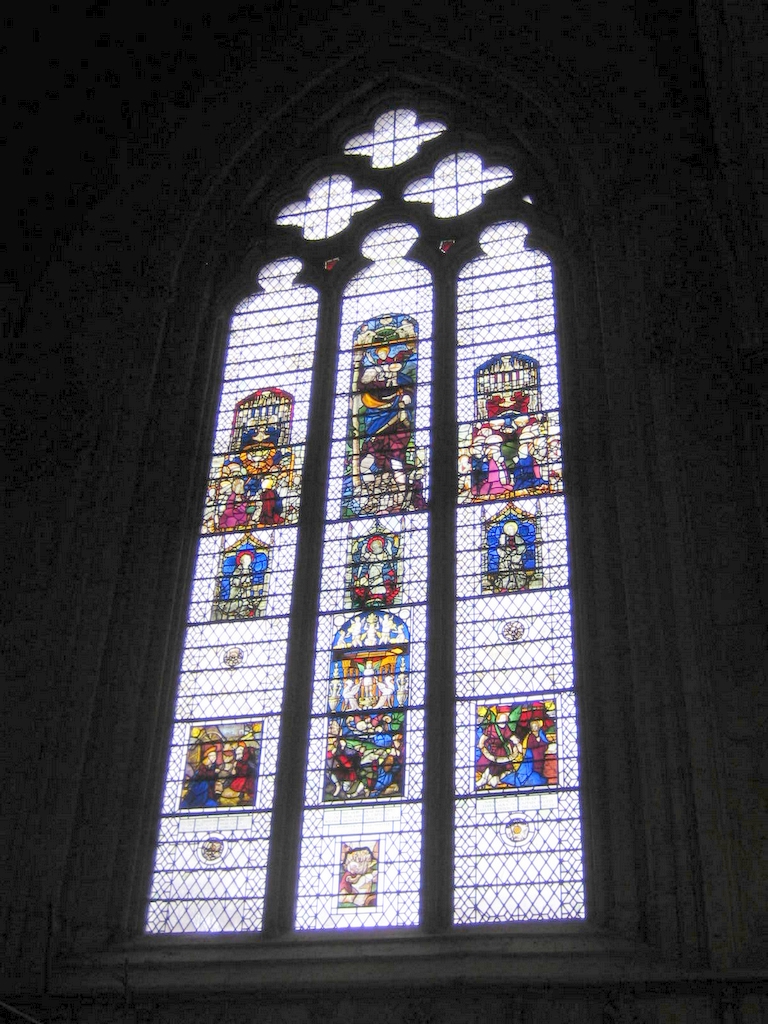
The Minster has aisled Naves. Here's a few photos of the North Nave Aisle. Originally the nave held many side altars and tombs but these were removed either in the Reformation or in 1730 when the flooring was replaced in the classical style. By then, the original Gothic was thought to be passť. In the six years it took to redo the floor throughout the Minister, every remaining tomb in the nave was permanently removed.
We can't blame just the remodeling crew here. Many more tombs, altars, and religious paraphernalia vanished 250 years earlier as the Church of England morphed during Elizabeth's reign (about the last 40 years of the 1500s) into a truly Protestant church (rather than just a Catholic church with the king instead of the pope as head). This new church was not big on purgatory and prayers for the dead -- so tombs were a prime target. York Minster suffered its greatest interior destruction during her reign (except for the numerous fires, of course). Not just tombs, but altars, hanging vestments, and even images of bishops in the stain glass were eradicated.

The Minster's walls are made from magnesian limestone quarried about 12 miles from the site where the receding seas left the Leeds area 250 million years ago.
An 1840 fire destroyed the roof of most of the nave and left this area an open, charred hulk for many years while the Minster fell into disrepair and, for a time, even weekly communion services were halted. Fortunately a young aristocratic cleric, Augustus Duncome, began raising funds in 1858 to restore the Minster to its former glory.

All of the stained glass was removed during World War II for safekeeping. Not a bad idea as the Germans in 1942 started the Baedeker Blitz -- a series of bombings of historic but not necessarily strategic or military targets in York and other historic cities in order to break British morale. (In fact, some historic building in York were damaged by German bombs such as the historic Guildhall.) As the above window shows, there is a lot of white space left for panels that have disappeared over the eight centuries and the various restorations.

Here's a detail below the windows showing several decapitated statues. I'd guess this was done during the Reformation when England's new Protestants attempted to remove Catholic icons from their houses of worship.